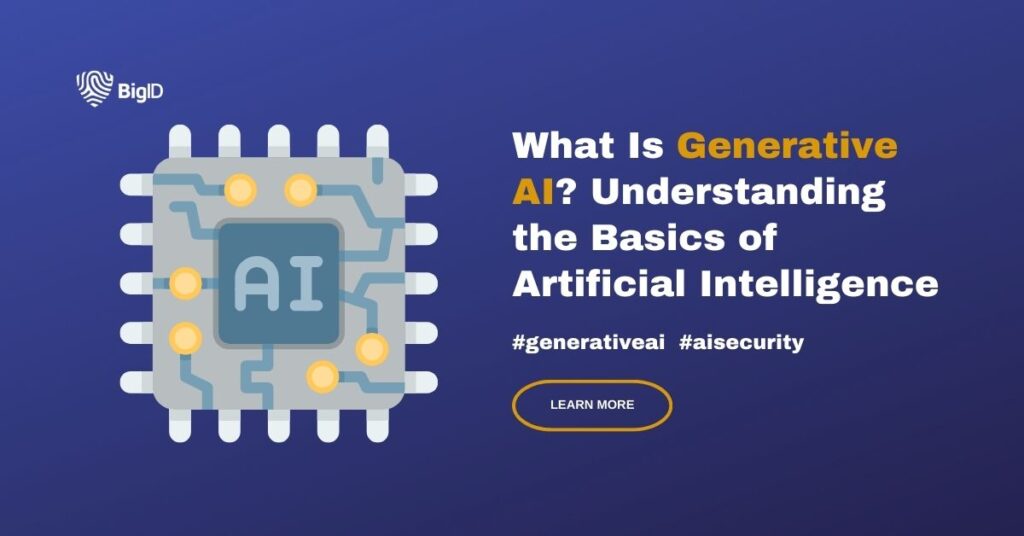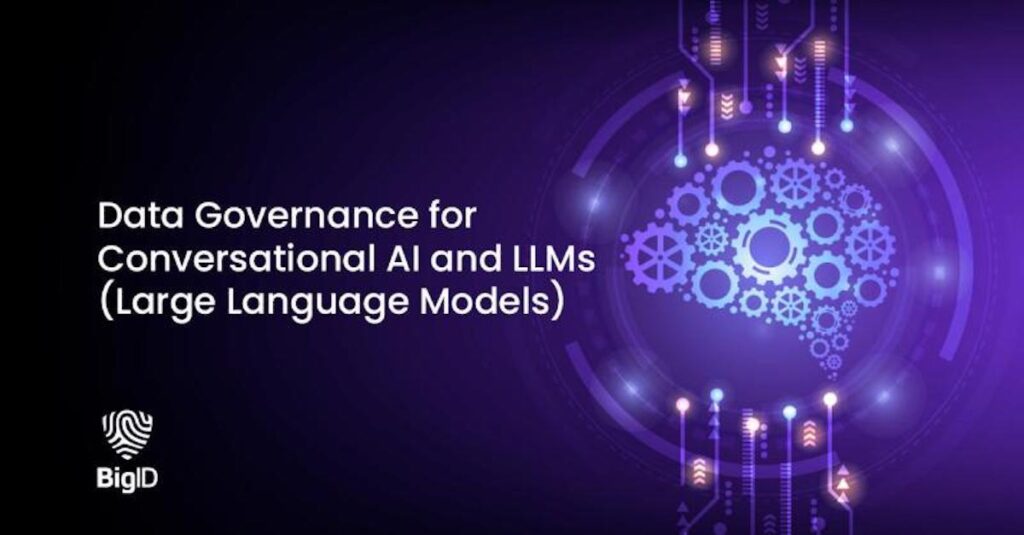What is Generative AI?
Generative Artificial Intelligence refers to the subset of AI techniques that generate new data, images, videos, or other content based on patterns and structures learned from existing data. It uses machine-learning algorithms to analyze large amounts of data, then generates new content similar in style or structure to the original data based on its “knowledge.”
Generative AI can be used for multiple applications, such as creating art, music, or even writing stories. In essence, it’s a technology that teaches machines to be creative and to generate new content that has not been explicitly programmed into them.
Understanding the Generative AI Model
Generative AI models use complex algorithms and neural networks — computational models designed to mimic the human brain’s structure and function — to learn patterns and structures in the data to create new content. If trained on a vast amount of data, they can also be known as foundation models.
Foundation models represent a specific subset of AI technologies. They are vast models, pre-trained on wide-ranging datasets. Their training allows them to grasp a broad spectrum of topics or domains. These models serve as versatile bases that can be fine-tuned or adapted for various tasks beyond their initial training. The adaptability and extensive knowledge foundation of these models make them invaluable for applications requiring a deep understanding of language, context, or visual information.
For example, ChatGPT, the AI chatbot, is a large language model trained on vast internet data, which allows it to generate conversational answers to users’ prompts. It’s also a foundation model that can power other applications. ChatGPT highlights a foundation model’s impact on generative AI.
There are three types of architectures used to build generative AI capabilities:
1. GAN
One of the most popular GenAI models is the Generative Adversarial Network (GAN), which consists of two neural networks: a generator and a discriminator. Discriminative models classify data into specific categories or classes, while generative models, including tools like ChatGPT or DALL-E, produce new data.
The generator learns to create new content similar to what it was trained on, while the discriminator learns to distinguish between the real training data and that which is generated.
These two networks are trained together in adversarial training, where the generator continually tries to improve its output to fool the discriminator, while the discriminator tries to become more accurate in distinguishing between the real and generated data.
2. VAE
Variational Autoencoders (VAEs) are advanced tools that work by simplifying complex data into its core essence. They then iterate and expand this basic version to generate new, similar forms of data. By first distilling data into a simplified representation and subsequently using this foundation to innovate, VAEs effectively create diverse yet logically related outcomes.
The fact that they can understand and replicate the subtle variances in data makes them useful in various professional fields, from digital image creation to pioneering new drugs.
VAEs can bridge the gap between complex data structures and practical, innovative solutions. They offer a sophisticated approach to data-driven creativity and problem-solving.
3. Transformers
Transformers, including generative pre-trained transformers (GPTs), represent a significant advancement for processing sequential data, like text. In fact, they were developed for natural language processing (NLP) tasks. They analyze relationships within the data to produce contextually relevant outputs.
Generative AI systems have many applications, such as generating realistic images, music, and even text. They have the potential to create content and solve problems in a wide range of industries, from art and entertainment to healthcare and finance.
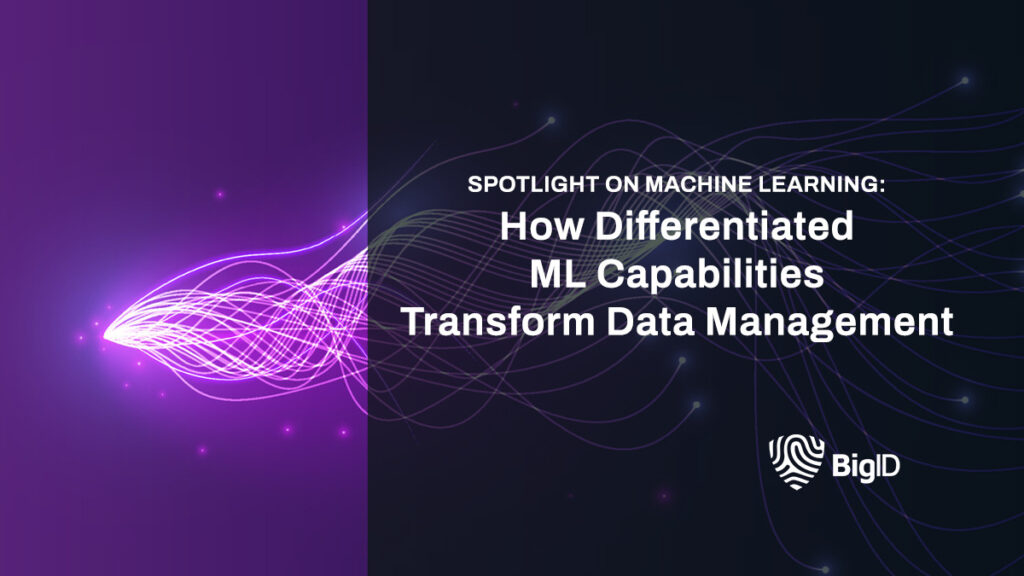
Machine Learning vs Generative AI Technology
Generative AI and machine learning are both subfields of artificial intelligence, but they differ in their approaches and objectives.
Machine learning is a type of AI that uses algorithms and statistical models to enable computers to learn from data without being explicitly programmed. AI algorithms are trained on data, and use this training to make predictions or decisions based on new data.
The goal of machine learning is to develop models that can accurately predict or classify data based on input features.
Generative AI, on the other hand, is a type of AI that focuses on generating new content or data that resembles real data. These models use deep learning techniques, such as neural networks, to generate new content, such as images, videos, or text. The goal of this technology is to create new data similar to real data and can be used for various purposes, from artistic creation to data augmentation.
Using Generative AI for Data Privacy & Security Benefits
Generative AI can be used in various ways to improve data security, including:
Synthetic Data Generation
Data anonymization is one of the best practices for individuals’ privacy protection. We can use generative AI to generate synthetic datasets that replicate real data characteristics without sensitive details. This innovation can be used to train AI models without risks.
Threat Detection
By simulating cyber-attack patterns, GenAI helps cybersecurity teams preemptively identify and mitigate potential threats, leveraging generative AI tools for early threat detection and prevention.
Secure Password Creation
Insecure passwords are one of the biggest risks in data and cybersecurity. Unfortunately, people create passwords that are easy to remember. We can use generative AI to create robust passwords, thereby significantly improving authentication security and minimizing data breach risk.
Intrusion Detection Improvement
Generative AI can enhance intrusion detection by mimicking various network traffic. It matches the pattern of regular traffic and flags any irregular patterns. This way, it can help in the timely identification and prevention of security threats.
Security Policy Development
Generative AI facilitates the creation of dynamic security policies through scenario simulation, helping organizations develop effective strategies against cyber threats.
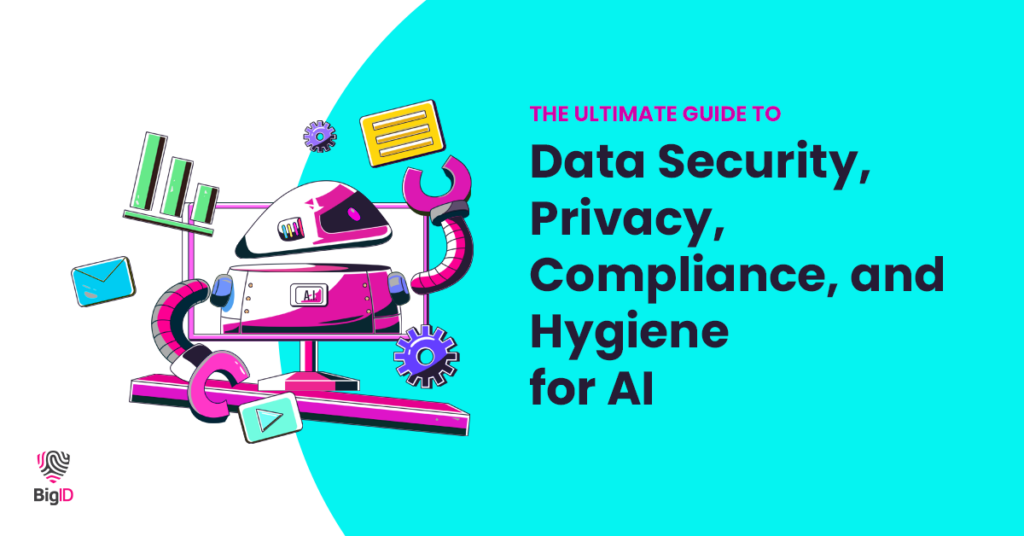
Generative AI Limitations
Generative AI has several limitations, including:
Limited Ability to Generalize
Generative models may not perform well with new or unseen data, particularly when trained on small or specific datasets. This limitation can lead to overfitting, where the model performs well on its training data but fails to produce accurate or reliable outputs in real-world applications.
Best practices for using generative AI emphasize the importance of diverse and extensive training datasets to enhance the models’ ability to generalize.
Biases in Training Data
The outputs generated by AI are only as unbiased as the data they’re trained on. If a model like ChatGPT is trained on biased or incomplete data, it can unintentionally reproduce or amplify these biases in its outputs. Companies implementing generative AI must carefully curate their training datasets to ensure that generative AI models can produce fair and unbiased content.
Computationally Intensive
The advanced capabilities of generative AI models come at a cost of significant computational resources and time. Training models like deep generative models can require extensive processing power, making them less accessible for some applications or smaller organizations.
Adopting cloud-based AI services, such as Google Cloud services, can help mitigate these computational demands, allowing more companies to use generative AI technologies effectively.
Lack of Interpretability
It’s not easy to understand how generative AI models arrive at a particular output, especially with complex models employing advanced techniques. This lack of interpretability complicates the process of verifying the accuracy and reliability of the generated content. It’s therefore essential to develop new AI research focused on making these models more transparent.
Limited Domain Expertise
In areas requiring specialized knowledge, such as medical or legal analysis, generative AI models may fall short when it comes to producing accurate or meaningful outputs without human expertise. This highlights the importance of combining AI capabilities with domain-specific knowledge to ensure the relevancy and accuracy of AI-generated content.
While generative AI has significant potential, it also has limitations that must be carefully considered and addressed to ensure that the generated output is accurate, reliable, and free from biases.
Risks of Generative AI
Like any technology, GenAI can pose some risks and safety concerns. Whether or not it is safe depends on how it is used and the specific application.
Here are some of the risks associated with it:
Bias and Discrimination
One of the most significant concerns with GenAI is that it can perpetuate and amplify biases present in the training data. Since these systems learn from vast datasets, any inherent bias — whether related to race, gender, age, or other characteristics — can influence their outputs. This can lead to discriminatory practices or unfair outcomes, especially when used in sensitive areas, such as recruitment, law enforcement, and lending.
Misinformation and Deepfakes
Generative AI’s ability to create realistic images, videos, and text can be weaponized to produce deepfakes and misinformation. These technologies can fabricate convincing fake news, impersonate individuals, and create false narratives to undermine trust in media, institutions, and public figures. It can have profound implications for politics, national security, and personal reputation, with concerns being raised about the integrity of information in the digital age.
Intellectual Property and Creative Rights
AI capabilities include creating art, music, literature, and other creative works, questions arise about the ownership of such content. Generative AI works can be made to resemble the style of existing artists, or easily generate novel creations, showing the versatility of generative AI applications. GenAI therefore challenges current intellectual property laws and raises ethical questions about creativity and authorship.
Security and Safety
The integration of generative AI into critical systems and infrastructure poses security risks. AI-generated content can be used in phishing attacks, fraud, and other malicious activities. Moreover, we rely on AI for decision-making in applications such as autonomous vehicles, healthcare, and financial systems. In these cases, it needs rigorous testing and validation to ensure safety and reliability.
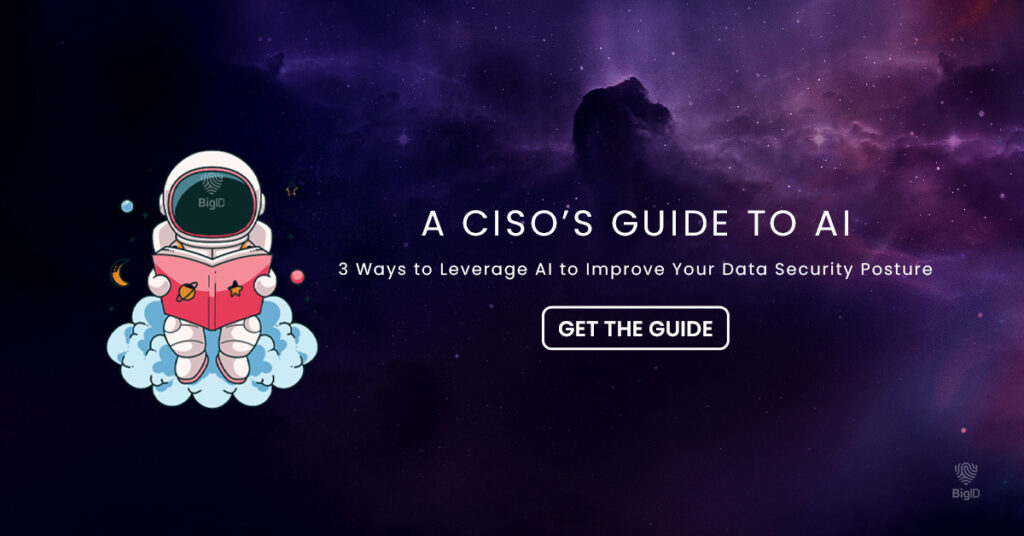
Best Practices for Using Generative AI
Establish Ethical and Legal Frameworks
It’s important to develop and enforce ethical guidelines and legal frameworks that guide the responsible use of generative AI. These frameworks should address bias, privacy, transparency, and accountability so that AI technologies benefit society while minimizing harm.
Mitigate Biases and Encourage Inclusivity
Active efforts to identify and mitigate bias in AI training datasets are essential. To that end, we need to diversify data sources, employ fairness measures, and continuously monitor and adjust models to ensure equitable outcomes.
Encourage Transparency and Explainability
To build trust and understanding among users, we need to increase the transparency and explainability of AI systems. We must disclose the use of AI, provide insight into how AI systems make decisions, and enable users to question and challenge AI-generated outcomes.
Invest in Public Awareness and Education
The public must be educated about the capabilities, risks, and ethical considerations of generative AI, so individuals can critically assess AI-generated content. Awareness campaigns can help people recognize deepfakes and misinformation, which will foster a more informed and discerning digital society.
So, while generative AI holds immense potential for innovation and creativity, its safe and responsible use hinges on addressing ethical, legal, and technical challenges. When we implement comprehensive mitigation strategies and foster an informed and ethical AI ecosystem, we can harness the benefits of generative AI while safeguarding against its risks.
Is Generative AI Governed?
Currently, there are no specific regulations in place to govern generative AI. However, some existing laws and regulations may apply to how generative AI is used, depending on the application and context.
For example, generative AI may be used to generate synthetic data that mimics real data. The use of that synthetic data may be subject to data protection laws and regulations, like the European Union’s General Data Protection Regulation (GDPR) or the California Consumer Privacy Act (CCPA).
Additionally, if generative AI creates content like images or videos, certain laws and regulations related to copyright, intellectual property, and privacy might apply.
As generative AI usage continues to grow and evolve, new laws and regulations may be developed to govern it. However, at this time, its application is largely unregulated.
Organizations must use their discretion, and consider the potential legal and ethical implications of the impact of implementing generative AI.
Examples of Generative AI
There are many applications of generative AI across a range of industries. Here are some examples:
Healthcare
In healthcare, generative AI plays a crucial role in advancing medical research and patient care while safeguarding privacy. It’s especially important to protect personal identifiable information (PII) or protected health information (PHI) in this area, which AI can help with.
It creates synthetic medical images and anonymized patient records to train machine learning models, which enables researchers and practitioners to enhance diagnostic tools and treatment strategies without exposing sensitive patient information.
Moreover, generative AI can also simulate diverse patient scenarios, aiding in the development of personalized medicine and tailored treatment plans.
Finance
The finance sector employs generative AI to produce synthetic financial datasets, allowing institutions to model risk, detect fraud, and optimize investment strategies under strict confidentiality. These datasets help machine learning models learn and improve predictive analytics without compromising their clients’ financial information.
Additionally, generative AI can tailor financial advice to individual clients, revolutionizing personal banking experiences.
Marketing
In marketing, the power of generative AI can be used to enhance customer engagement by producing personalized content at scale. It can craft customized product recommendations, targeted advertisements, and creative social media content — all while driving engagement and loyalty. Generative AI’s ability to analyze consumer behavior patterns enables marketers to predict trends and tailor campaigns for maximum impact.
In other words, it can transform the way brands communicate with their audiences.
Content Creation
Beyond traditional sectors, GenAI is a powerhouse for content creation: it can produce articles, stories, music, artwork, and more. AI content assists creative professionals by offering initial drafts or concepts to help streamline the creative process.
For example, it can compose music that complements video content or generate initial sketches that artists can refine.
Legal
In the legal field, companies use generative models to help draft documents, summarize case law, and prepare legal briefs. It can also analyze vast legal databases to provide practitioners with synthesized insights, which makes legal research more efficient.
Education
Generative AI apps are used to support personalized learning, as they can create customized educational materials and assessments that adapt to students’ learning styles and proficiency levels.
The broader adoption of these apps could foster a more engaging and effective learning environment.
The Future of Generative AI
The future of generative AI is all set to redefine creativity and innovation across industries. These models will become more sophisticated as the technology evolves. As a result, the new generative models might be capable of generating increasingly complex content that’s indistinguishable from human-created work.
Thanks to these advancements, GenAI is set to significantly expand its capabilities. It’s expected to:
- Promote the creation of more immersive virtual environments
- Refine the creative design process
- Help resolve complex scientific challenges by proposing innovative hypotheses or designs.
Key to unlocking these future potentials will be overcoming current limitations around data bias, computational efficiency, and model interpretability. Efforts in AI research are already underway to make models more adaptable and capable of learning from smaller datasets, making them less resource-intensive.
Additionally, the integration of ethical considerations and fairness into AI development will play a crucial role in ensuring that generative AI benefits broader society.
Moreover, as this technology becomes more accessible, its adoption is expected to surge, with companies leveraging these models to drive innovation, personalize customer experiences, and automate content creation.
The future of generative AI not only promises enhanced capabilities but also poses new challenges and opportunities, urging a balanced approach to its development and application.
Leveraging BigID for Generative AI Work
BigID is a data intelligence platform for privacy, security, and governance that can be leveraged for generative AI initiatives in several ways. One key feature of BigID is its ability to automatically classify and categorize sensitive data across an organization’s data landscape, including data stored on-premises, in the cloud, and in third-party applications.
This data classification can support generative AI initiatives by providing a comprehensive view of the organization’s data landscape and identifying data that can be used for generative AI training. BigID can also help ensure that any generated data is free from sensitive or protected information.
Additionally, BigID’s data discovery and classification capabilities can support compliance initiatives by helping organizations identify and classify sensitive data per regulatory requirements, such as GDPR or CCPA.
To increase the value of your organization’s generative AI initiatives— get a 1:1 demo with BigID today.

